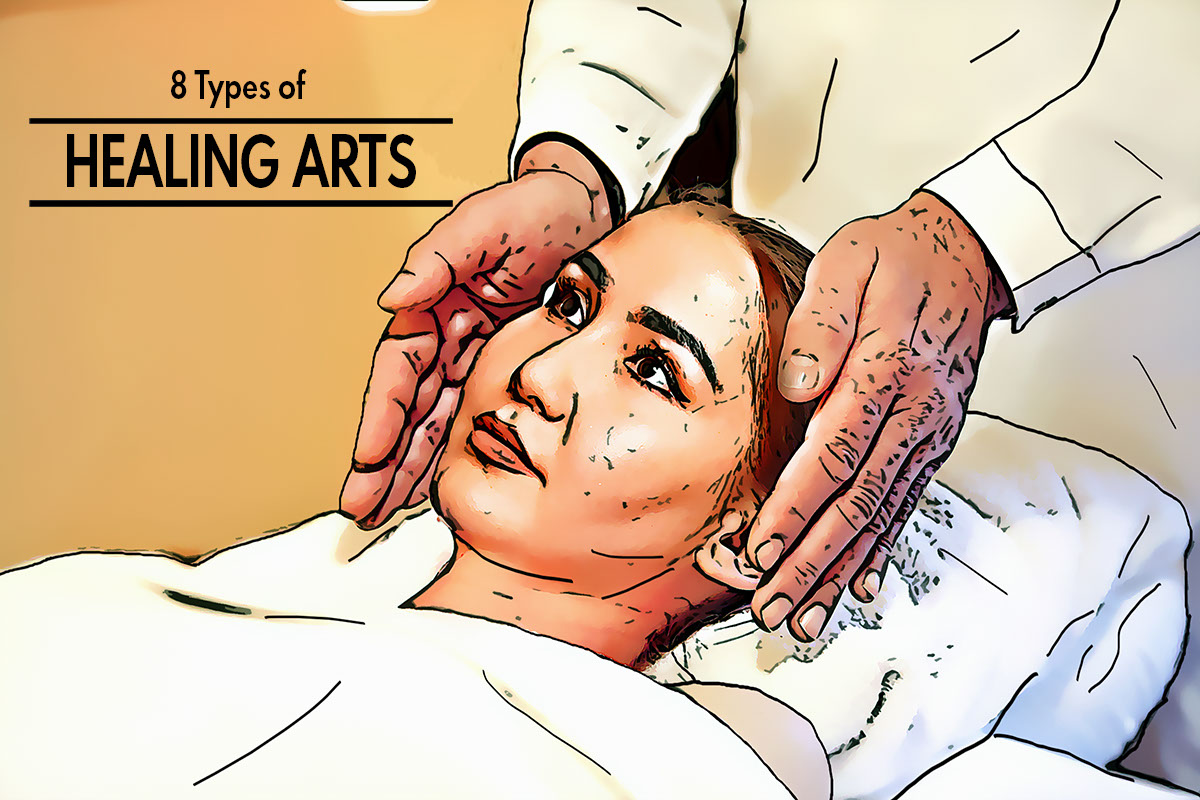What is Healing Art?
Healing art is the group of alternative treatments and nonmedical practices that promote health and well-being. It includes chiropractic therapy, acupuncture, massage, aromatherapy, naturopathy, reiki, tai chi, and various other practices.(1) It is also referred to as alternative or complementary medicine.

Healing art has art in it, i.e. It does not follow the traditional medication protocol. It helps in improving the outcome of various conditions wherein even western medicine struggles to treat effectively.
8 Types of Healing Arts
The different types of healing art are as follows:
Chiropractic Therapies
Chiropractic therapy use manipulation techniques, such as moving the body back in alignment.(2) Most of the treatments involved in chiropractic therapy focus on treating the spine.
Chiropractors need to have a license to practice.
Energy Therapies
Energy therapies work by redirecting energy in or outside the body and promoting healing and well-being.
Reiki is a type of energy therapy, in which the practitioners move their hands lightly over the person to redirect energy and promote healing.(3)
As energy therapy does not involve the need for any change in the body, the practitioners do not require any license or training.
Energy therapy practitioners are not listed under medical providers. But, the medical providers can take additional training for energy healing as their additional expertise.
Mind-Body Therapies
There are numerous mind-body therapies that help in promoting relaxation.(4) Some of these claim to heal the body by healing the mind and some increase mindfulness.
Mind-body therapies include meditation, relaxation, progressive muscle relaxation, breathwork, and guided meditation.
There is a range of certifications that can help people learn specific techniques for mind-body therapies.
Traditional Chinese Medicine
Traditional Chinese medicine is a combination of different methods including acupuncture, acupressure, tai chi, and herbal medicine.(5)
In acupuncture, needles are used to redirect energy in the body whereas, in acupressure, pressure is applied on the specific points in the body for healing purposes.
Traditional Chinese medicine practitioners are not medical doctors and may not require any formal license. But, acupuncture requires the practitioners to attend an acupuncture school and acquire a state license to practice.
Massage Therapies
In massage therapy healing is done via massage and the therapist needs to go through a formal program to get the knowledge of different types of massage and to know their purpose.
Homeopathy and Herbal Practice
In herbal medicine practice, various herbs are used to heal or treat a medical condition. They can be used along with other treatments. Herbal medications are not regulated by the Food and Drug Administration and therefore anyone can recommend or take them.
Homeopathy is a very popular medical practice that involves the use of the smallest amount of dose to bring out the cure. This means if a large amount of dose of a herb is causing a headache, its smallest medicinal part can be helpful in curing the condition. All the medicines used in homeopathy are based on this principle.
Movement Therapies
Movement-based therapies include yoga, pilates, Qi gong, and other stretching and exercising techniques that are used for healing.
Those practicing movement therapies claim to heal certain medical conditions. For example, yoga supports relaxation and can be helpful in stress, anxiety, and other related conditions.
Creative Practices
Various creative practices include singing, dancing, drawing, painting, and other artistic things.
A review done in 2020 found that music therapy helped in improving the quality of life in people with Alzheimer’s and dementia.(6) It helped in reducing depression and improving brain function.
A person can take up these creative practices according to their interest. It helps in relaxation and gives peace to the mind which promotes healing.
Healing art is not a replacement for conventional medicine but can be used alone. They can complement and improve the care of the person while he is undergoing other treatments. Also, when no conventional treatment is available for a particular condition, alternative treatment can be chosen as they have much anecdotal evidence of cures for different medical conditions. It is always good to keep the doctor aware of the type of healing a person is adding along with the conventional treatment. It would not only be an additional help to the cure but also will be helpful in keeping away the unwanted side effects.
